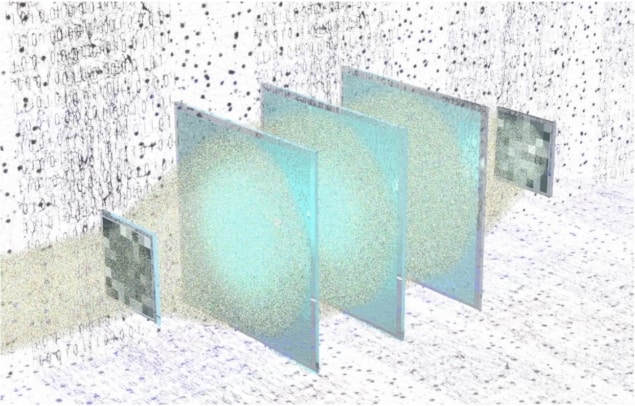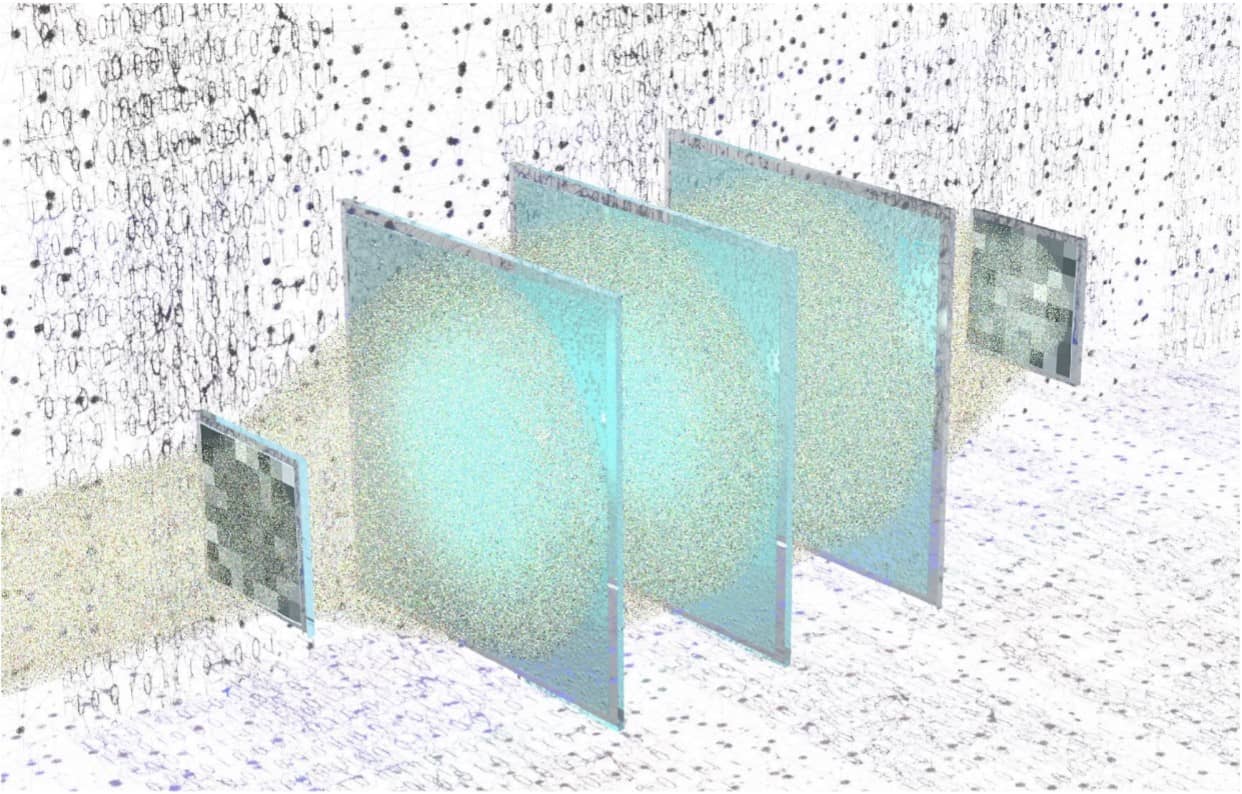
Researchers in the US have shown how all-optical processors could be used to carry out a range of linear mathematical transformations, including Fourier transforms. Using machine learning techniques, Onur Kulce, Aydogan Ozcan and colleagues at the University of California, Los Angeles, generated the blueprint for set of diffractive surfaces that can be used to produce specific optical outputs from any arbitrary input. When implemented in the lab, the approach could provide an alternative for calculating linear transformations using conventional computers.
To process information, computers often use linear transformations to perform mathematical operations on data. A classic example is the Fourier transform, which converts a time sequence of data – such as sound captured by a microphone – into a representation of the frequencies present in the data.
The speed at which such transformations can be done is limited by the processing power of electronic computers, but recently researchers have been exploring the possibility of using purely optical devices to do the task. Since optical waves travel effortlessly at the speed of light, this approach could one day be used to process information at far higher speeds and using far less energy than conventional computers.
Metamaterials and metasurfaces
Recent advances in photonics have led to the design of new metamaterials and metasurfaces, which are engineered to diffract light in very specific ways. As wavefronts of light interact with these materials, the light is transformed in ways that depend on the geometry of the surface. By carefully adjusting the properties of diffractive surfaces, researchers can control the nature of the linear transformations they cause in light waves.
In their study, Kulce, Ozcan and colleagues showed how a series of diffractive surfaces could be used to achieve any arbitrary transformation between input and output waves. To do this, they used machine learning methods to design the surfaces required for specific transformations.
Filtering operations
Through this technique, they successfully designed a wide array of arbitrary linear transformations including Fourier transforms, image permutations, and filtering operations. In addition, they showed that the efficiency of their transformations could be significantly improved, simply by increasing the number of diffractive surfaces.

Metamaterial sculpts heart-shaped darkness from light
The team’s results could pave the way for a new generation of all-optical processors that could offer several advantages over conventional computers. Aside from the energy used to generate the optical waves themselves, these devices could operate completely passively; requiring no power to run.
Through future research, the techniques developed by Kulce and colleagues could soon be used to create diffractive surfaces in the lab: potentially bringing an all-optical transformation processor a step closer to reality.
The research is described in Light: Science & Applications.
